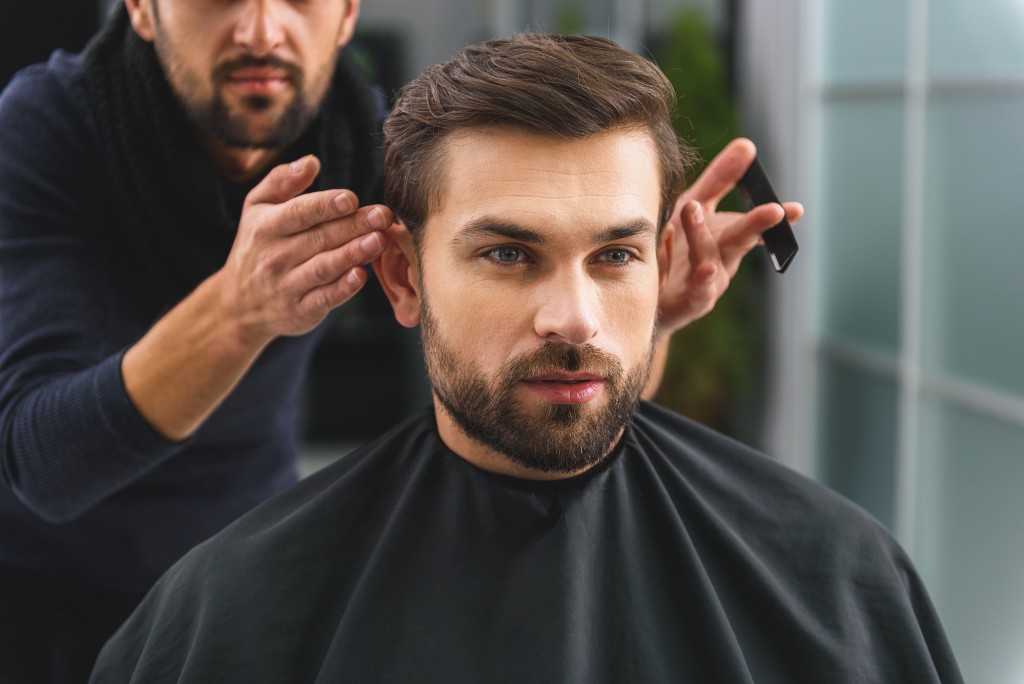One recent study wants to squash a common belief between men and women. In the research with over 1,000 participants, it turns out that over 30% of males called themselves vain while only about 21% of females said the same thing.
The study may have several loopholes and limitations. First, the sample size was small. Second, the participants might have filled out a self-reported questionnaire, so their answers could already be subject to bias.
Further, both men and women could have different perceptions about vanity. For example, for women, dressing properly and putting on makeup might not be vain since these were regular activities for them.
Regardless of the outcome, men have all the right to feel vain too, especially when it comes to their hair. More established studies revealed that they not only grow copious amounts of hair, but their quality depends on many factors.
Of Terminal and Vellus Hairs
Anyone planning to open a salon or like to groom themselves need to invest in the right equipment, such as hairdressing scissors. This is because hairs don’t appear the same for both men and women.
While both genders can grow a lot of hair, women usually have only 30% of hair compared to over 90% of males. In other words, they cover almost all parts of the body.
Their textures are also not the same, and they can change as they grow older. For example, when we are still babies, we grow lanugo hair. The strands are often soft, fine, but downy. They’re the ones that make infants appear “hairy.”
Infants usually grow them when they’re still between a four- and fifth-month fetus. Their purpose is to protect the skin from the possible harmful effects of the amniotic fluid.
However, once the baby’s out, the reason for its existence is gone. Thus, we shed it. Later, it transforms into vellus hair.
What is a vellus hair? The hair is short and barely noticeable, even if it is lightly pigmented. The strands can also blend well with the color of the skin, so you can hardly pay attention to them. They can also be so thin that a person may look hairless.
As we grow older, the hair undergoes a massive transition. For men, many of the vellus hair will become terminal or androgen-dependent. The strands at this time will have a more prominent color while they become thicker and even coarser.
Why Does the Hair Change This Way?
One of the common theories goes back to evolution. Although both men and women gathered and hunted, the jobs usually fell on the males. The long, thick, and coarse hair, therefore, served as extra protection against harsh environmental elements.
Others, meanwhile, believed that the hair differentiation between men and women is related to sex. This is because males often developed more terminal hairs when they hit puberty.
One thing is certain: hormones have something to do with it. Both men and women have androgens, but for men, these are their primary hormones.
Androgens give them primary and secondary sexual characteristics, which includes changing the hair's quality and volume. This also explains why women with abnormal hormones may develop thicker vellus hair.
But other factors can affect the quality of the hair. Take, for example, the differences between the beard and the scalp hair.
Both are terminal hairs, but beards may appear coarser because of the number of follicles present. The area may have between 20 and 80 follicles per square centimeter compared to at least 100,000 on the scalp.
Moreover, the dermal papillae or the protrusions on the skin surface around the beard area are often bigger than those of the scalp. In fact, they can be four times larger, which makes the hair thicker.
The Effect of Melanin
Interestingly, men’s hair can differ not only in quality and volume but also in color. For instance, they may have black scalp hair but ginger beards. The reason can be a mutation.
Two types of pigments can influence the color of the hair: eumelanin, which gives it its dark or black hue, and phenomelanine, which makes it red.
The percentage of both can then determine the actual color of the hair. For instance, if you have more phenomelanine, then your hair is ginger. Blondes have fewer of both.
However, in some men, they may have an MC1R gene mutation, which they can inherit from either or both parents. If they get it from either mom or dad, they may have regular colored hair on the scalp but a red beard.
Understanding how your hair can grow differently from women may help you learn to take care of it—and even your skin—a bit more. It doesn’t matter whether it makes you vain or not.




